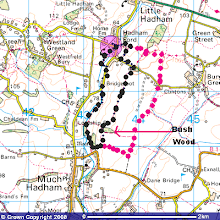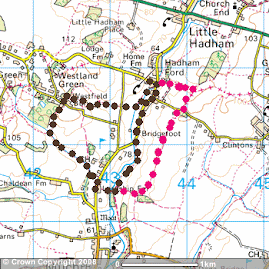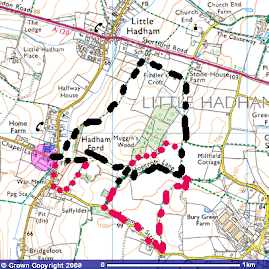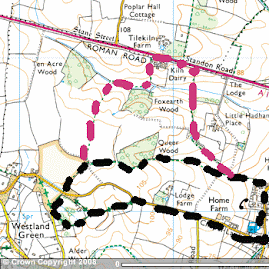Five species of plover covered here and all rather straight forward once you have got a good look at the bird. Green plover, better known as Lapwing, Golden plover, Grey Plover, Ringed plover and Little Ringed plover.
Lapwing:
An unmistakeable bird, usually seen in large numbers. Green with a crest, showing broad rounded black and white wings in flight. A little time at Amwell studying these and it will become a familiar and easy bird to recognise.
Grey Plover:
A bird, again unmistakeable in summer plumage. A stunning bird showing a silver grey back and jet black belly whilst in summer plumage. This bird migrates from North Africa to the Arctic regions to breed. It has been noted that it does the Spring journey north in one go whilst its return journey is frequently interrupted with fuelling stops on salt marshes and beaches. A common bird for North Norfolk in September where a late moulting bird maybe found, still supporting the breeding plumage. These two examples are just starting to moult. First from Titchwell, second one from Dungeness, Kent
Note their long legs which are also apparent in their duller non breeding plumage. This is a strikingly larger bird than the next species, the Golden plover. Rarely seen in large flocks and frequently solitary in its nature. Note the legs still appear long and the overall feel for the bird is a grey and white bird sporting a black bill with dark legs. First photo here, a distant one on Cley beach, the second one taken from the platform of Faro station, Portugal overlooking the salt creeks next to the station.
Grey plover: dark bill, longish dark legs, grey plumage and a rounded, dumpy bird. As can be seen be these terrible photos, the dark eye stands out from the pale face and cheeks
Golden Plover:
A bird that can be found in its 1000's in many areas of the UK. I used to watch these flocking on Frodsham Marshes, Cheshire where I cut my ornithological teeth aged 7-11. Basically, in summer plumage, a golden version of the Grey plover, only smaller and shorter legged. Again, likely to be seen in moult in August and September upon returning from breeding grounds before it takes on its familiar golden flecked non breeding plumage. Below, 5 recent returnees to Norfolk, still showing the black belly and the flecked golden wings and back. Again, a dark eye and dark legs. Second photo shows part of a huge flock that can be witnessed at Titchwell. Note the solitary large bird showing rounded black and white plumage; a Lapwing.
Top Tip: When watching waders it is not uncommon for the whole lot to take to the air at the same time, spooking gulls as well to take off. When this happens it is invariably a bird of prey that has spooked them: Marsh harrier, Peregrine, Hen harrier etc. Look to the sky to see what it has caused the commotion.
In winter plumage the Golden plover stands out when roosting upon a mud scrape. Usually in big numbers but always worth checking through for a different bird. Here, several self explanatory shots of Golden plover in non breeding plumage. Compare leg length with Grey plover. In overall comparison a smaller, daintier bird and one that any visitor to places such as RSPB Titchwell will become familiar with very rapidly. These photos: 1 Aviero, Portugal 2. Titchwell beach and 3. Cley Norfolk Wildlife Reserve.
Ringed Plover:
The Ringed plover and the smaller Little Ringed plover are a tad more tricky to sort out, but there are some easy diagnostic features to aid id. Firstly, the Little Ringed plover is a bird that moves north to the UK to breed from Africa, a summer migrant so it can be ruled out after September and before mid March.
let's look at the resident Ringed plover. In breeding plumage a bright orange bill and orange legs. It shows a black stripe, thick around the eye, thinning around the base of the bill. White forehead followed by another black stripe across the front of the crown. A wide black band across the breast. Wings a light brown/faun colour. An example here from Tavira in Portugal whilst the second photo of Ringed plover and Dunlin is from Aviero, mid Portugal. Note the similarity in size to the Dunlin. Size is all important when making field notes on waders. Compare it in size to a bird that you know that is close by.
Little Ringed Plover:
As stated, a summer migrant to our shores, the first ever LRP to breed was indeed in Hertfordshire at Tring reservoirs in, I think without checking, 1955. Therefore, it is most likely to be encountered in breeding plumage where the stand out feature is a spectacular yellow eye ring, never present on Ringed plover, as shown below. A much thinner bird than the rounded Ringed Plover.
To differentiate from Ringed plover, note the extra white stipe across the top of the head, the dark bill and darker legs. It is also a smaller bird but for that to be useful it really requires both species to be seen together. However, LRP is a much slimmer bird than the rounded Ringed plover. The yellow eye ring really does stand out. Photos here from Amwell Reserve.
The LRP does hang on until quiet late in the year and will be seen in non breeding plumage, again a less colourful version of the breeding plumage.
Note the much finer bill on LRP and the thin black collar bordering the white ring over the back of the head. Also, the LRP shows a patch of white above the base of the bill and its legs become a fleshy shade of pinky/yellow. Finally, no white wing bar on LRP. Photos from North Norfolk and Amwell. A habit of LRP during breeding season is to spend a lot of time running around over sandbanks and mud scrapes in an attempt to catch flies that land upon the damp mud. Rye Meads RSPB near Broxbourne normally hosts them, seen often from the Draper Hide.































































No comments:
Post a Comment